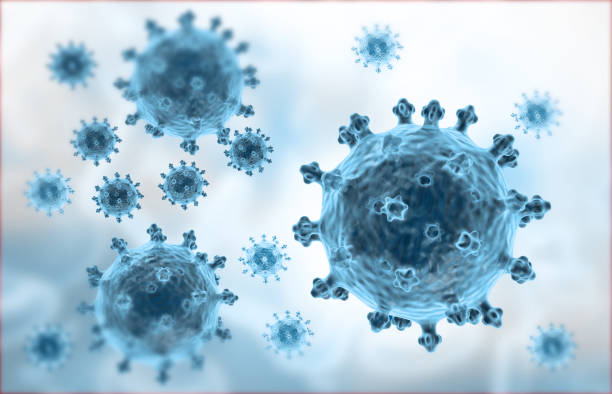Advancements in HIV/AIDS Treatment: Navigating the Landscape in 2025
The field of HIV/AIDS treatment has witnessed remarkable progress over the years, providing individuals with the ability to effectively manage the virus and maintain a high quality of life. These advancements have led to the development of comprehensive treatment plans that not only suppress the virus but also improve overall health and well-being. Understanding these treatments is crucial for patients, healthcare providers, and community advocates alike.
The field of HIV/AIDS treatment has witnessed remarkable progress over the years, providing individuals with the ability to effectively manage the virus and maintain a high quality of life. These advancements have led to the development of comprehensive treatment plans that not only suppress the virus but also improve overall health and well-being. Understanding these treatments is crucial for patients, healthcare providers, and community advocates alike.

The Role of Antiretroviral Therapy (ART)
Antiretroviral therapy (ART) continues to be the cornerstone of HIV treatment. This treatment approach involves a combination of medications that work together to prevent the virus from replicating. While ART does not cure HIV, it is highly effective in reducing viral loads to undetectable levels, thereby preventing disease progression and reducing transmission risks.
ART consists of several drug classes, including:
• Nucleoside and nucleotide reverse transcriptase inhibitors (NRTIs)
• Non-nucleoside reverse transcriptase inhibitors (NNRTIs)
• Protease inhibitors (PIs)
• Integrase strand transfer inhibitors (INSTIs)
• Entry inhibitors
The combination of these medications is carefully chosen to maximize efficacy and prevent drug resistance. Early initiation of ART is strongly recommended, as studies have shown that beginning treatment soon after diagnosis leads to significantly better long-term health outcomes.
Importance of Adherence to ART
Strict adherence to ART is essential for its success. Missing doses can lead to increased viral loads and the potential development of drug-resistant strains of HIV. Strategies to ensure adherence include setting reminders, using pill organizers, and integrating medication schedules into daily routines.
Healthcare providers play a vital role in supporting adherence by addressing potential challenges such as side effects, mental health concerns, and lifestyle factors. Open communication between patients and medical professionals ensures that individuals receive the necessary support to maintain their treatment regimen. Additionally, support groups provide encouragement and shared experiences that reinforce adherence and emotional well-being.
Emerging Innovations in HIV Treatment
Recent breakthroughs in HIV research have paved the way for innovative treatment options. One of the most significant developments is long-acting injectable ART, which allows for monthly or less frequent dosing, reducing the burden of daily medication intake and improving adherence.
Further research is exploring cutting-edge approaches such as gene editing, therapeutic vaccines, and immune modulation. Scientists are investigating whether these methods could lead to a functional cure, where the immune system can control HIV without continuous ART. While these treatments remain experimental, they offer hope for the future of HIV care.
Proactive Strategies for HIV Prevention
Prevention remains a key pillar in the fight against HIV/AIDS. One of the most effective preventive measures is pre-exposure prophylaxis (PrEP), a medication that significantly reduces the risk of HIV infection in high-risk individuals. When taken consistently, PrEP can lower the likelihood of transmission by up to 99%.
Beyond PrEP, comprehensive prevention efforts include regular HIV testing, safe sex practices, and education initiatives aimed at raising awareness and reducing stigma. Combining prevention strategies with effective treatment measures is essential in reducing new infections and improving community health outcomes.
The Role of Support Networks
Living with HIV presents both physical and emotional challenges. Access to comprehensive support systems, including healthcare providers, mental health professionals, and community organizations, is vital for holistic care. Psychosocial support is particularly crucial, as individuals with HIV may face stigma, social isolation, and mental health struggles.
Support groups provide safe spaces for individuals to share experiences, seek advice, and receive encouragement. These networks empower individuals by fostering resilience, reinforcing treatment adherence, and enhancing overall well-being. Ensuring access to these resources is critical in improving the lives of those affected by HIV.
Conclusion
As we move through 2025, staying informed about the latest advancements in HIV/AIDS treatment is essential for patients and healthcare professionals. Antiretroviral therapy remains the gold standard for managing HIV, but emerging treatments and prevention strategies continue to offer new possibilities. With ongoing research, increased access to care, and robust support systems, individuals living with HIV can achieve better health outcomes and lead fulfilling lives. The global fight against HIV/AIDS depends on continued innovation, awareness, and a commitment to improving the well-being of all those affected.